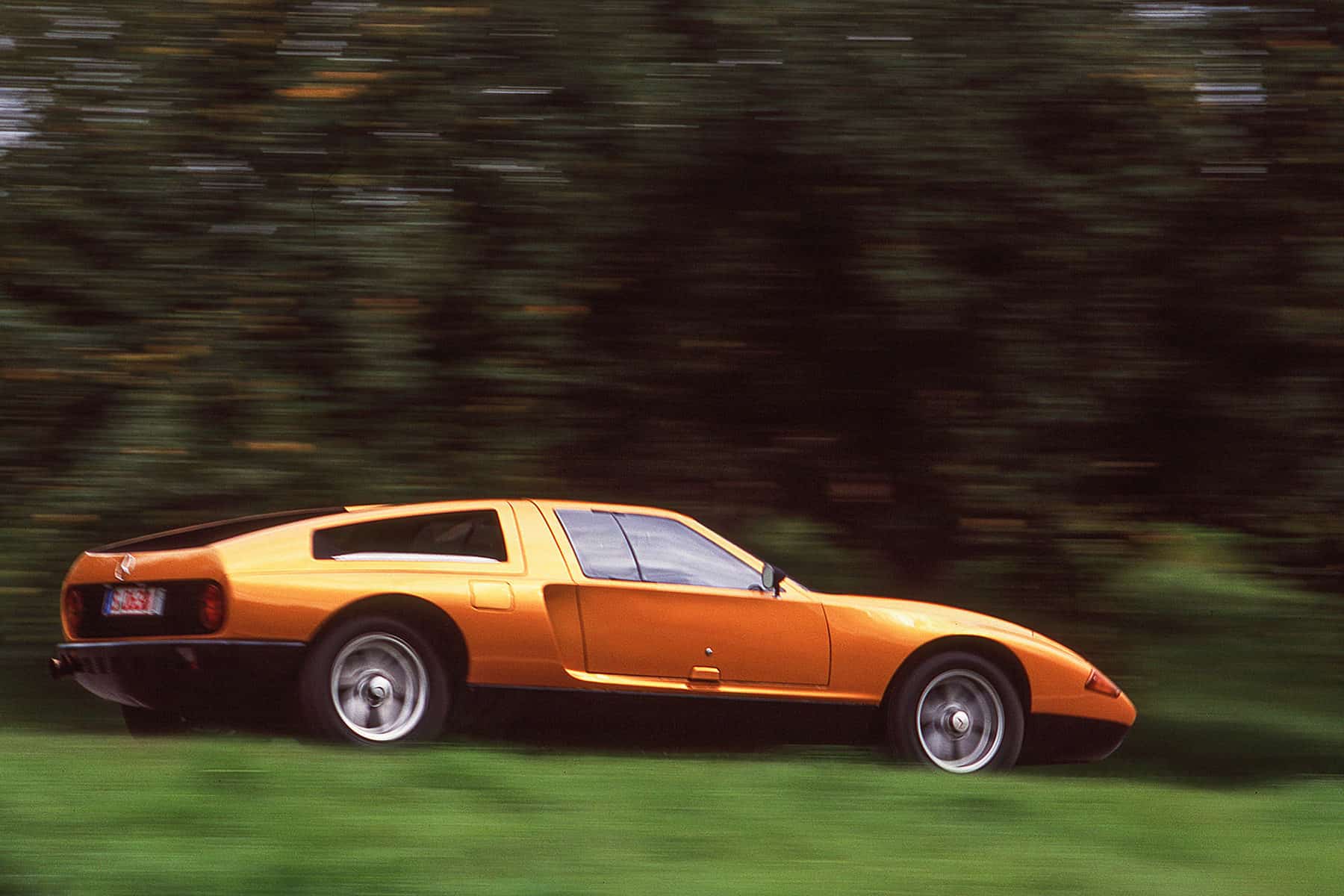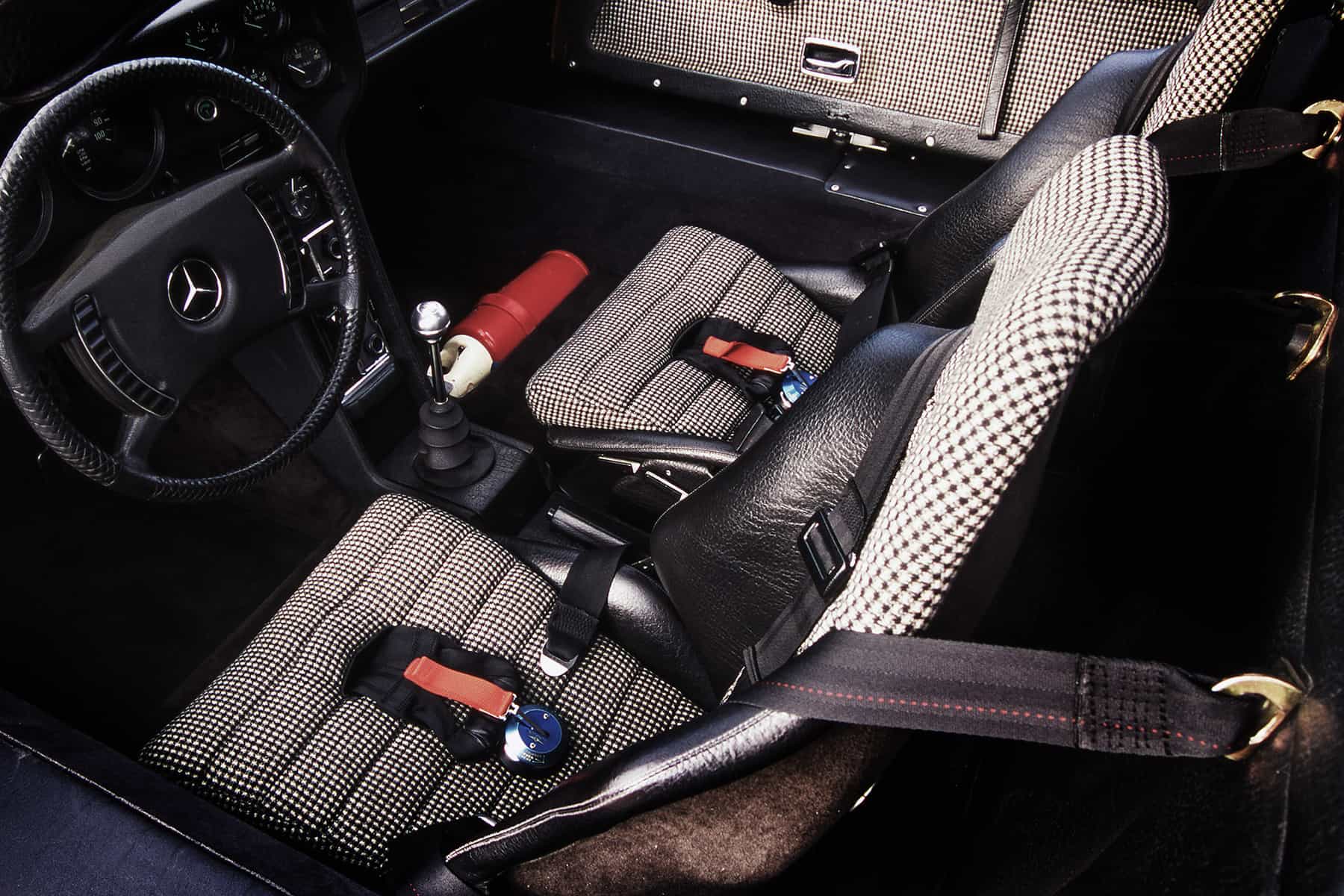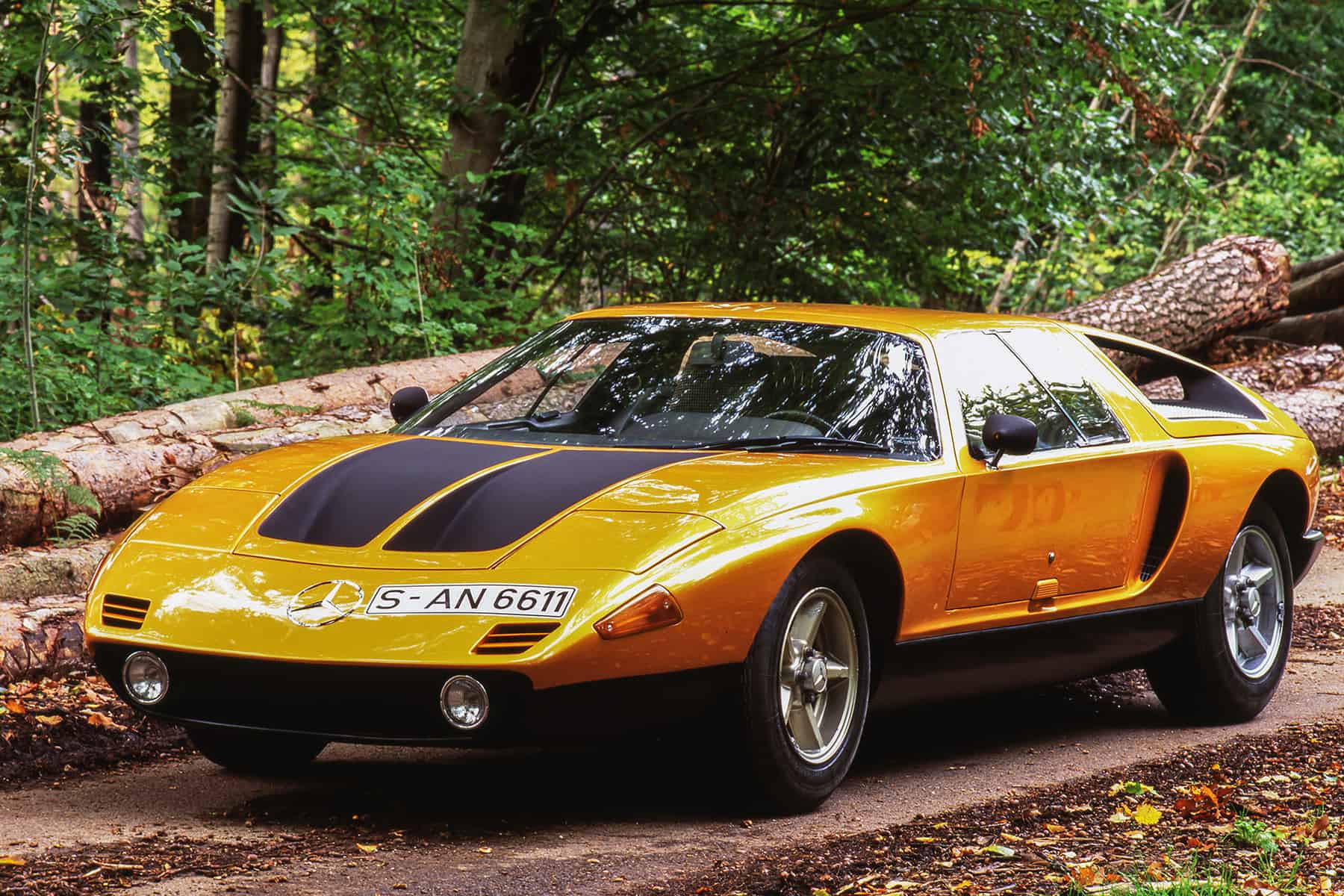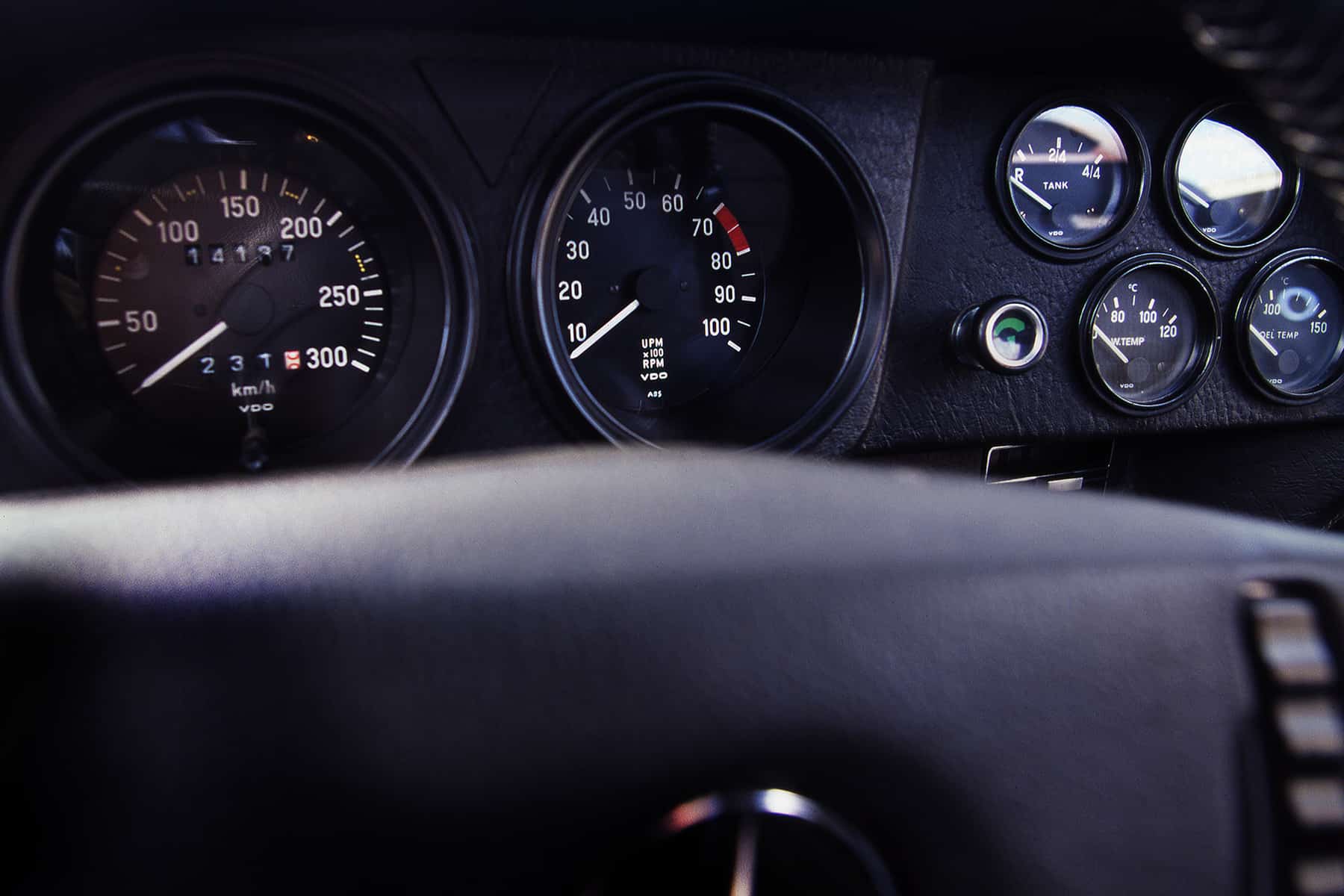
The Legendary Mercedes C111
The “car that never was”
BY: JOHN LAMM
In the 1960s, Felix Wankel’s compact and powerful rotary engine was touted as the sweetheart engine of the future. NSU engineered it into its Ro80 sedan. Citroen also used it, but the hero of the Wankel was Mazda. The Japanese automaker has used it in a variety of vehicles for years and claims to have one ready for production in the near future. The 1991 Le Mans-winning Mazda 787B had a rotary Wankel out back.
American automakers – GM being the main one – also got into the rotary engine game, though rather late. By the time GM got serious with the Wankel in the early 1970s, most automakers other than Mazda had realized the rotary engine’s weakness. Faced with upcoming emissions and fuel mileage rules, particularly in the US market, Felix Wankel’s rotary engine was shelved – though Chevrolet created a pair of mid-engine Wankel prototypes, one with 2 rotors, another with 4, which mainly slipped into history until the recent debut of the mid-engine Corvette C8.

But there is another mid-engine rotary-powered automobile that has happily never drifted into the past – the Mercedes-Benz C111.
Thirty years ago, I joined Paul Frère, the famed automotive journalist and Le Mans winner, to spend a day in the forests around Mercedes’ home, Stuttgart, and on Mercedes high-wall banking, and I got the story on the legendary car.
Mercedes didn’t mean for the C111 to be a production car despite the fact that after the car’s debut at the 1969 Frankfurt Auto Show the company received blank checks from wealthy collectors. It wasn’t called the C111, but the 101. However, Peugeot was using model numbers with a “0” in the middle. So the car’s numbering was changed to C111.
Praise flowed in. Paul Frère wrote, the C111 “…would not only be the most comfortable and smooth, but also the fastest car of this kind. I am firmly convinced that there would be thousands of customers for such a car around the world.” Deutsche Auto-Zeitung reported the C111 was “the car that takes your breath away.”
Mercedes had bought its Wankel license in 1961 and initially developed it for automotive use as a 3-rotor with 600 cc in each cylinder. With direct injection, this brought 280 horsepower and 0-62 mph in 5.0 seconds. It was backed by a ZF 4-speed transaxle. Aims for the initial C111 were to test the Wankel engine, the idea of assembling a limited-production car with plastic body mounted on a steel platform and a new rear suspension.
It is, of course, the striking bodywork the draws in your heart. The design came from Mercedes’ Sindelfingen studios, credit to Bruno Sacco. The shape was aimed at lower drag and reduced aerodynamic lift, success verified in wind tunnels. And there had to be gullwing doors.
This design varied somewhat from the other five C111s that were created – the one pictured here is the second generation form with a larger windshield and nose radiators, a different shape front and rear, plus a lower dashboard.

This new design was part of a quick change. The original C111 became the C111-II that debuted months later at the 1970 Geneva Motor Show. Mercedes gave the C111-II another “cylinder,” a 4-rotor Wankel with 350 horsepower, the same top speed with 62 mph coming up in 4.8 seconds – very impressive for its time and a bit up on Ferraris of the day.
But to no good end.
In 1971, Mercedes ended its C111 Wankel adventure. Dr. Kurt Obländer, who led engine testing on the rotary, explained, “Due to the elongated, not exactly compact combustion chambers, fuel economy was poor, resulting in high fuel consumption and unacceptably high pollutant emissions. These drawbacks were inherent to the design principles.”
That’s a pause in the C111 Wankel story, not the end. The C111 tale continued under new name – the C111-IID, the version with a 3.0-liter, supercharged, intercooled diesel engine that went on to set 16 world records at Nardò in Italy.
Now, back to my trip with Paul Frère to Untertürkheim, 1970.
There’s something special about seeing one of Mercedes’ many famed cars out of the museum – which is spectacular in its own right. We would get to use the C111-II on Mercedes’ tall, banked track and then take it out into the forest. Paul was obviously delighted, as he had driven this very car he was now writing about at its unveiling in Geneva. Paul later teamed in a high-speed test of the super-aero C111-IV. They set 9 international speed records.

After our day with the C111-II, here’s what Paul had to say in the January, 2001, issue of Road & Track:
“The C111-II is so elegant and businesslike that, with modern technology under its skin and wide tires it would be the hit of any motor show today (all comments from 1970). But with the big oil crisis and emissions laws looming, the end of the Wankel boom was near.
“Even by today’s standards, the C111-II is a very fast car considering its 187-mph top speed or acceleration that Mercedes says is good for 0-62 mph in 4.2 seconds and 0-124 mph in less than 10 seconds. With no part in reciprocating movement, the Wankel engine is a model of smoothness at any speed, and it pulls vigorously from as low as 2000 rpm, though below that speed, throttle control is rather difficult.
“In a car capable of more than 185 mph, a 4-speed gearbox would not be acceptable today. Thankfully the engine’s wide powerband makes up, at least partially, for the big gaps between the four gears, the most blatant being between 1st gear, in which 45 mph is reached at the 7,000-rpm redline and 2nd , which is good for 100 mph. Neither is the shift mechanism as precise as we’d like today.


“Though we did not push the car to its limits, cornering speeds are obviously quite high, even on the car’s “vintage” Michelin MXV tires, the best you could get in the 1970s. The C111-II corners with hardly any understeer, and there is a quite sharp oversteer reaction if the accelerator is lifted, which helps turn-in and confirms the abilities of Mercedes’ development drivers.
“For this story, conditions did not allow us to up to more than 125 mph, at which the stability is excellent. The servo-operated brakes aren’t up to hard work but under normal conditions, they were well up to their task.
“The only department in which the C111-II shows it age is the steering. Mercedes traditional recirculating ball system, which survived up to recent times–albeit with power assist. At the time Mercedes developed the C111, rack-and-pinion steering was considered too sensitive to road input and power assist was deemed unsuitable for sports cars. The result is that the steering is quite heavy both at low speed and as lateral g-forces increase. In spite of the large diameter of the leather steering wheel and it’s 4.0-turns lock-to-lock.
“The cockpit is quite roomy and reminiscent of the 300SLs, with deep, well-contoured, fabric-lined seats and white instruments dominated by the tachometer and speedometer and including an oil temperature gauge in addition to the regulars. The odometer, by the way, indicated some 8,700 miles, exemplary of Mercedes’ thoroughness in development. The console carrying the controls for the heating and rather poor ventilation system even includes a Becker radio mounted vertically. The gullwing doors windows are fixed with small, swiveling panels at their edges acting as air extractors.
“The full-size spare wheel is carried under the front hood and there is a fairly large luggage bin at the rear, kept nicely warm by the exhaust system surrounding it!”
Needless to say, we had a special day with the Mercedes C111 – Paul to exercise his memories, me to shoot photos and get some passenger seat time in this mysterious car. Oddly enough, that Monday was just the start of our Wankel week. On Tuesday Paul and I headed home and by Thursday we were off to Japan and Mazda’s Miyoshi test track. Subject of the story? Mazda’s rotary-powered 787B, the only car with a Wankel to win the 24-hour test.





